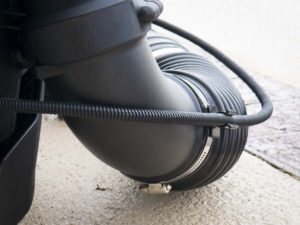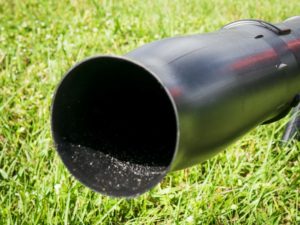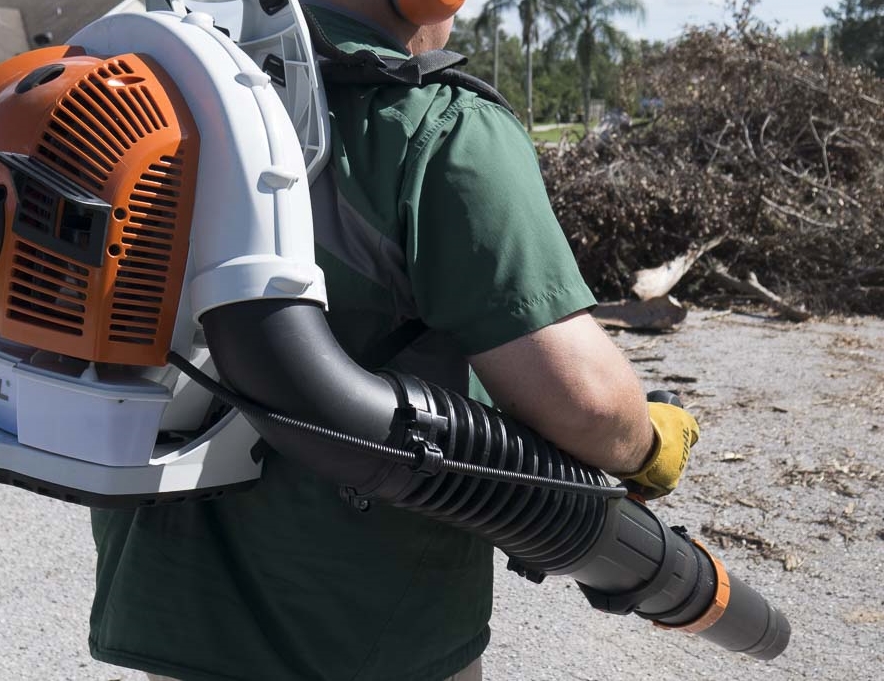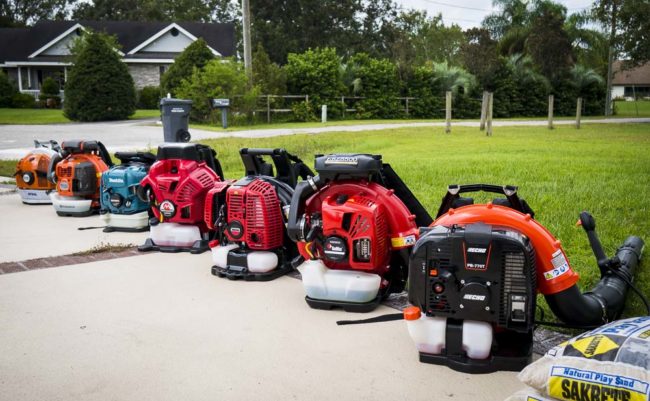Whether you’re using an electric, cordless, or gas blower, how powerful it is usually boils down to two numbers: blower CFM and MPH. At least, those are the numbers manufacturers tout in the marketing. But those numbers are off from what we found in our backpack blower shootout. In some cases, the numbers were way off. So what’s the deal, are manufacturers lying or is there something else going on?
Lying, not so much. But there are some tricks of the trade and other factors to consider. But let’s define a couple of terms first. Blower CFM stands for cubic feet per minute and represents the volume of air the blower moves. In other words, it’s the physical amount of air. Even though you can’t see it, air is full of nitrogen, oxygen, and other elements, so it’s matter in the scientific sense. The impeller has to use blade angle and rotation speed to pull the air in and move it through the blower.
Blower airspeed is measured in miles per hour (MPH) and is a measure of how fast the air is moving. This one’s a much easier concept because it’s easy to understand how fast we drive, wind speed, and other speed measurements. It’s the same idea with blowers, just with hurricane and tornado force airspeeds.
Why are Blower CFM and MPH Different From Manufacturer Claims in Our Testing?
Environmental Factors

When you’re talking about how manufacturers test blower CFM and MPH, you first need to consider that they are running the tests in perfect environmental conditions. AKA, they’re in a lab. Temperature, humidity, and atmospheric pressure all affect the data. In fact, there’s even an ANSI calculator that can help determine the theoretical max airspeed for a blower if you know the environmental conditions you’re working with.
So how much do environmental conditions affect the outcome?
In terms of blower airspeed, we saw a drop of up to 40 MPH from the calculator’s theoretical max to our actual data – that’s almost 20% for one model we tested in the Central Florida heat and humidity. And we find that ~40 MPH drop on several models, not just one.
Testing Points

Well, it’s not all sunshine and rainbows there, either. Some use their narrow tip to test the airspeed then their open nozzle to test the air volume (CFM). This gives them the highest numbers for both, but you’ll never experience them together in the real world, even if you get perfect environmental conditions.
The Bottom Line
So the next time you’re looking at a blower, ask the dealer about the manufacturer’s process for measuring blower CFM and MPH. The ones that test at the end of the nozzle without switching nozzle tips are pretty proud of the fact that they do. There’s no getting around how significantly the environmental factors work against the manufacturer’s laboratory data, though. So give them some grace. In the end – and yes, we’re tooting our own horn here – it’s quality head to head data that shows you the real differences between each one.




